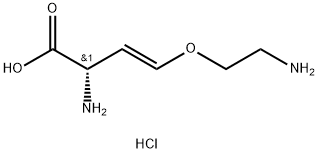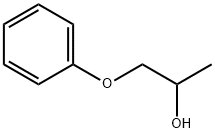2-Amino-1,3-propanediol
Synonym(s):2-Amino-1,3-propanediol
- CAS NO.:534-03-2
- Empirical Formula: C3H9NO2
- Molecular Weight: 91.11
- MDL number: MFCD00051487
- EINECS: 208-584-0
- SAFETY DATA SHEET (SDS)
- Update Date: 2025-09-25 17:15:13

What is 2-Amino-1,3-propanediol?
Description
2-Amino-1,3-propanediol (2-APD, also known as serinol) is a high-value-added chemical that is used as a building block for the synthesis of a variety of compounds, including drugs to treat type 2 diabetes mellitus, the antibiotic chloramphenicol, immune multiple sclerosis, and a new generation of nonionic X-ray contrast agents.
Chemical properties
white to off-white adhering crystalline powder. 2-Amino-1,3-propanediol (1,3-dihydroxy-isopropylamine, aminoglycerin or amino-trimethylenglykol) has a molecular formula of C3H9NO2, belongs to the group of amino alcohols and is prochiral. As it is a structural analogue to the amino acid serine, the common designation is serinol. It is very stable, corrosive, hygroscopic, and dissolves very well in water. It has a molecular weight of 91.11 g/mol, melts at 52 to 56 °C, and has a boiling point of 115 to 116 °C.
The Uses of 2-Amino-1,3-propanediol
2-Amino-1,3-propanediol is used as an intermediate in several chemical applications and is also useful for serinol and some of its derivatives. Serinol may be used to prepare the artificial nucleic acids. It may be used in the synthesis of N-acylated serinol and C16-serinol affinity gel.
Preparation
Add 20% 2-nitro-1,3-propanediol methanol solution (1250 g) to 5% palladium/carbon 3.5 g. Hydrogen (70 L, pressure 3MPa) was continuously introduced and reacted at 75°C for 5 hours to obtain serine alcohol solution. The serine alcohol solution is pumped into a high vacuum distillation vessel, vacuumed to 40 pa, and methanol is distilled for reuse. Yield = 97.2%.
Biosynthesis
Currently, the manufacture of 2-Amino-1,3-propanediol (2-APD) predominantly relies on chemical processes by utilizing fossil fuel-derived and highly explosive raw materials. In addition to chemical synthesis, its synthesis can also rely on biosynthesis. Luo et al. established an artificial biosynthetic pathway for converting glucose to 2-APD in a metabolically engineered Escherichia coli. This artificial pathway employs an engineered heterogeneous aminotransferase RtxA for diverting dihydroxyacetone phosphate (DHAP) to generate 2-APD phosphate and an endogenous phosphatase for converting it into the target product 2-APD. 2-APD-P is 2-amino-1,3-propanediol phosphate[1].
Origin
In the 1970s, 2-Amino-1,3-propanediol (2-APD) was first reported to be a molecular building block of the natural products rhizobitoxine and dihydrorhizobitoxine produced by the legume symbiont Rhizobium japonicum[1].
General Description
Serinol activates toxin production in the attenuated cultures of Helminthosporium sacchari. Preparation of polyesters derived from serinol is reported.
Source
Serinol is a non-toxic, odourless, biodegradable chemical substance obtained from both natural and petrochemical feedstocks. In fact, serinol has been synthesized from oil-based precursors such as 2-nitro-1,3-propanediol, nitromethane, dihydroxyacetone (DHA), dihydroxyacetone oxime, and 5-amino-1,3-dioxane, but it can also be prepared from the biomolecule glycerol. It was found to occur in renewable sources, such as sugar cane (Saccharum officinarum) or as a metabolite from sponge (Stelletta Inconspicua). Moreover, since serinol is structurally analogous to serin, its preparation starting from this amino acid has been reported.
References
[1] Luo Y, et al. An Artificial Biosynthetic Pathway for 2?Amino-1,3-Propanediol
Production Using Metabolically Engineered Escherichia coli. ACS Synthetic Biology, 2019; 8: 548–556.
Properties of 2-Amino-1,3-propanediol
| Melting point: | 52-55 °C (lit.) |
| Boiling point: | 277 °C (lit.) |
| Density | 1.1278 (rough estimate) |
| vapor pressure | 0.01Pa at 25℃ |
| refractive index | 1.4698 (estimate) |
| Flash point: | >230 °F |
| storage temp. | Keep in dark place,Inert atmosphere,Room temperature |
| solubility | DMSO (Soluble, Sonicated), Methanol (Slightly, Sonicated), Water (Slightly) |
| pka | 12.24±0.10(Predicted) |
| form | Adhering Crystalline Powder |
| color | White to off-white |
| Water Solubility | Soluble in water and alcohol. |
| Sensitive | Hygroscopic |
| BRN | 635683 |
| Stability: | Hygroscopic |
| CAS DataBase Reference | 534-03-2(CAS DataBase Reference) |
| NIST Chemistry Reference | 2-Amino-1,3-propanediol(534-03-2) |
| EPA Substance Registry System | 1,3-Propanediol, 2-amino- (534-03-2) |
Safety information for 2-Amino-1,3-propanediol
| Signal word | Danger |
| Pictogram(s) |
 Corrosion Corrosives GHS05 |
| GHS Hazard Statements |
H314:Skin corrosion/irritation |
| Precautionary Statement Codes |
P260:Do not breathe dust/fume/gas/mist/vapours/spray. P280:Wear protective gloves/protective clothing/eye protection/face protection. P363:Wash contaminated clothing before reuse. P303+P361+P353:IF ON SKIN (or hair): Remove/Take off Immediately all contaminated clothing. Rinse SKIN with water/shower. P305+P351+P338:IF IN EYES: Rinse cautiously with water for several minutes. Remove contact lenses, if present and easy to do. Continuerinsing. |
Computed Descriptors for 2-Amino-1,3-propanediol
| InChIKey | KJJPLEZQSCZCKE-UHFFFAOYSA-N |
New Products
4,4-Difluoropiperidine hydrochloride tert-butyl 9-methoxy-3-azaspiro[5.5]undecane-3-carboxylate Indole Methyl Resin N-Isopropylurea N,N-Dicyclohexylcarbodiimide(DCC) MELDRUMS ACID 5-METHYLISOXAZOLE-4-CARBOXYLIC ACID Magnessium Bis glycinate Zinc ascorbate 1-bromo-2-butyne 2-acetamidophenol 9(10H)-anthracenone Erythrosin B, 4-Piperidinopiperidine 2-((4-morpholinophenylamino) (methylthio) methylene) malononitrile 2,4-dihydroxybenzaldehyde 3-(4-morpholinophenylamino)-5-amino-1H-pyrazole-4-carbonitrile Methyl 2-methylquinoline-6-carboxylate 2,6-dichloro-4-nitropyridine 4-Bromo-2-chlorobenzonitrile 2-(benzylamino)acetic acid hydrochloride 4-(tert-Butoxycarbonylamino)but- 2-ynoic acid 3,4-dihydro-2H-benzo[b][1,4]dioxepine 1-Phenyl-1-cycloprppanecarboxylicacidRelated products of tetrahydrofuran








You may like
-
 534-03-2 2-Amino-1,3-propanediol (Serinol) 99%View Details
534-03-2 2-Amino-1,3-propanediol (Serinol) 99%View Details
534-03-2 -
 534-03-2 98%View Details
534-03-2 98%View Details
534-03-2 -
 2-Amino-1,3-propanediol 98%View Details
2-Amino-1,3-propanediol 98%View Details
534-03-2 -
 2-Amino-1,3-propanediol CAS 534-03-2View Details
2-Amino-1,3-propanediol CAS 534-03-2View Details
534-03-2 -
 2-Amino-1,3-propanediol CAS 534-03-2View Details
2-Amino-1,3-propanediol CAS 534-03-2View Details
534-03-2 -
 2-Amino-1,3-propanediol, 98% CAS 534-03-2View Details
2-Amino-1,3-propanediol, 98% CAS 534-03-2View Details
534-03-2 -
 Serinol CAS 534-03-2View Details
Serinol CAS 534-03-2View Details
534-03-2 -
 20677-73-0 (2,2-diethoxyethyl)methylamine 98%View Details
20677-73-0 (2,2-diethoxyethyl)methylamine 98%View Details
20677-73-0
